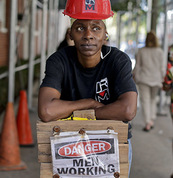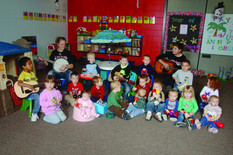|
|
DEED in the News

On average, women accounted for 12.2 percent of all Minnesota construction workers in 2017, according to DEED. That’s 15,442 women in a pool of 126,575 workers. If enrollment growth at Dunwoody College of Technology is a good tape measure, women are poised to make big strides in Minnesota’s construction industry.
|
Seasonal factors pushed unemployment rates higher across southeastern Minnesota in the first month of this year. The latest jobs data from DEED shows the jobless rate for the Rochester area rose from 2.5-percent in December to 3.1-percent in January. That matched the unemployment rate for Olmsted County in January of last year. The report also shows the size of the local labor force hit an all-time high in January. It’s now estimated at just over 88,200, which is almost 2000 higher than it was a year ago.

Optum Health plans to close its health care claims office in International Falls this summer. The good news is the company’s 90 workers can keep their jobs. The bad news is that offer is good only if they’re able to work remotely. And those who live outside the city limits may not have access to the high-speed internet service they’d need to keep earning a company paycheck. Gov. Tim Walz has promised he’d attack the problem like a “moonshot.” Meanwhile, a Republican-sponsored bill with bipartisan support is making its way through the Legislature, promising $35 million a year in each of the next two years for rural broadband upgrades.
|
Redwood Falls Gazette - 3/12/19
EDA Coordinator Kurk Kramer said a shortage of child care openings, in communities across the state, is an issue he’s heard about for several years, from both DEED, and the Economic Development Association of Minnesota (EDAM). He’s also heard about it locally, from business people and parents. The issue has been one of importance for the Sleepy Eye EDA.
|
|
 |

Serving Our Customers
Minnesotans who are blind, low vision, or deaf-blind are leading busy lives: going to work, raising families, enjoying retirement, working toward a degree, and contributing to their communities. Yet, it can sometimes be hard to imagine how you would get along in life if you couldn’t see. Three new videos from State Services for the Blind aim to show what’s possible. Employers looking to fill vacant positions in a tight labor market can see how blind employees might just be the right fit for the job, in “How Can I do This Job If I Can’t See?” Families concerned about an aging parent who is losing their vision, can better understand how seniors are living well with vision loss in “How Can I Do It If I Can’t See It?” And anyone who used to love to read, but can’t anymore because of vision loss or another disability, will discover how SSB’s Communication Center will re-open the world of reading in “How Can I Read It If I can’t See It?”
|
|
|
|
 |
|
Two Minnesota cities were on Livability's list of top 20 places to live. For six years Livability has ranked cities in the U.S. according to their own Livability Index. This year Minneapolis was ranked 13th in the nation for livability and Rochester was ranked 5th. |
|
|